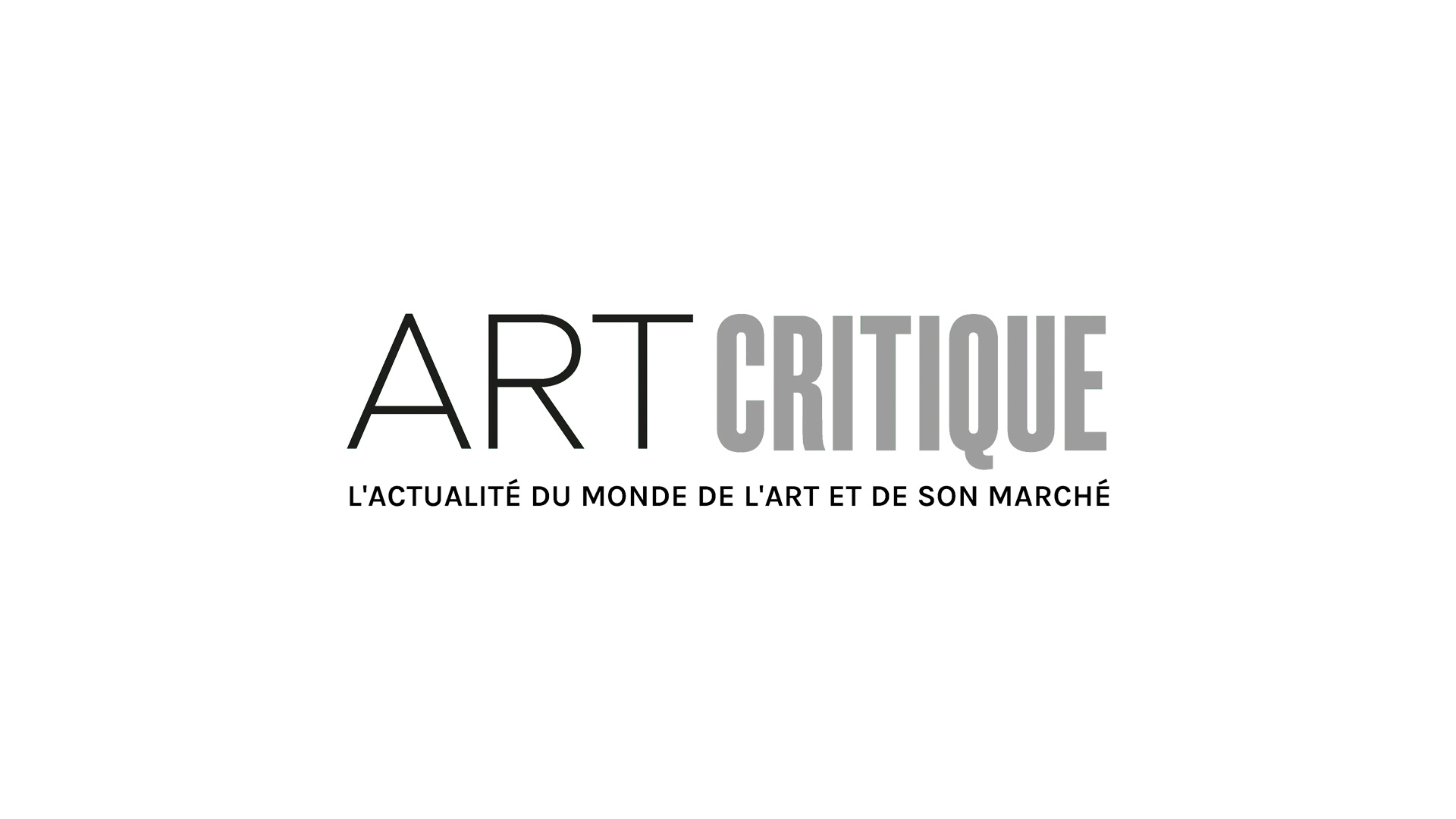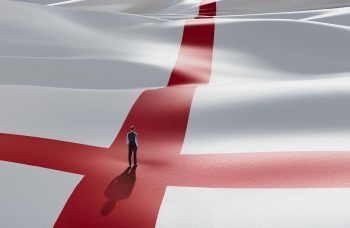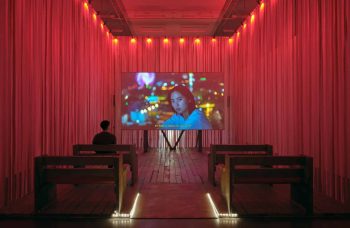Photoartist Valery Katsuba is already known in the European art and fashion community. Despite the fact that Valery was born in a Belarussian village and his career started in Leningrad (Saint Petersburg), where he attended the Maritime Academy, it was the West that established his reputation as an artist. Katsuba’s projects were exhibited in institutions and galleries of Paris, Madrid, London and New York, as well as in Belgium, Mexico and Russia. The artist’s works are in museum collections of the National Centre of Art and Culture of Georges Pompidou, the State Russian Museum, the Moscow Museum of Modern Art, the State Museum Center de Arte de 2 de Mayo in Madrid and others.
Finally, the Asian audience will be presented the essence of the artist’s creative process. The personal retrospective exhibition ‘Valery Katsuba: Russian Romantic Realism’ (curated by Karen Smith) opened in the Shanghai Centre of Photography (SCoP) сo-organised by Anna Nova Gallery and Sarah Vinitz Foundation. For the first time in China the audience will have a chance to enjoy how Katsuba elegantly explores human bodies by means of photography. The occasion was used as an opportunity to write this diptych essay about Katsuba’s art.

De/Construction of Beauty
One of the characteristic features of contemporary art is deconstruction of grand narratives. Beauty as one of such narratives that was dominating in the discursive field of art for a really long time has been discredited. The defamation process began as early as in the Middle Ages but was most evident at the turn of the 19th and 20th centuries, when the сlassic aesthetic values were destroyed under the pressure of a new artistic matter, which required modernity. Today, in the 21st century, we can no longer define precisely what is beautiful and what is not. The boundaries of ‘beauty’ are expanding infinitely – or even losing the value totally. Classical aesthetic canons are becoming vestiges of the past. In the time period when values are reassessed, old guidelines are rejected, and new ones are being looked for, Valery Katsuba creates his photographs emanating classical beauty.
The origins of this beauty are to be sought in the cradle of European culture in Ancient Greece and more specifically – in its Classical period. With almost absolute certainty, writer and culture researcher Andrew Solomon calls Katsuba ‘a master of aesthetics’, comparing him to Praxiteles, the most prominent sculptor of Classical Greece. Katsuba’s photographs feature a harmonious understanding of the universe close to the Antique, based on the concepts of Order, Cosmos and Logos. This is what we see in almost every photograph by Katsuba. The artist achieves this through the formal aspect of his works: an arranged composition that follows rules, сlear linearity, color schemes and chiaroscuro, closed forms and space tectonics along with absolute clarity. At the same time, the semantics of his works present a special lightness and as art historian and Antiquity discoverer Johann Winckelmann put it, ‘noble simplicity and quiet grandeur’.
Another important similarity between Katsuba’s artistic world and the Antique is anthropocentricity. Each of Katsuba’s photographs represents people, their beauty, spirits and bodies. And all his characters are endowed with Kalos kagathos., which translated from Ancient Greek means beautiful (καλὸς) and virtuous (ἀγαθός). That is a quality that describes a perfect and complete human personality, harmonious in mind and body. All these principles of formal and semantic modalities impose upon adoption of the classical basis in Katsuba’s photography. He seems to incorporate the values of Classical antiquity in photographic media, and, moreover, if photography had existed in the Classical age, it would have looked like this.
Therefore, Katsuba takes on the classical line in the West European art – the antique tradition that has been pulsing in the body of the European visual culture, slowing down in the Middle Ages, regaining its pace in the Renaissance, fading in the age of the Baroque and the Mannerism, and then rushing on in the Classicism. It is a pleasure to feel this rhythm still throbbing in works by contemporary artists – it means the tradition lives on and beauty keeps revitalizing.

Temporality: Forward into the Past
In a way, there is time present in Katsuba’s photos. Turning to the tradition of the past, Katsuba stays in modernity. In a unique and extraordinary way, his photographs combine Past, Present and Future. Perhaps, such a montage of three tenses that couldn’t have existed in the real world, the two of them being antonymous, introduces a sense of serenity and stillness similar to classical pastorals. Characters of the photographs are frozen in a moment, which is extremely difficult to grasp. Katsuba overcomes impossibility. It is like he visualizes the sentence from Faust – ‘Beautiful moment, do not pass away!’
Moreover, Katsuba is interested in the relative non-variability of landscapes — whether it be a natural or architectural landscape — and historical events passing through them, as well as human fates and faces. As the artist himself says, ‘I ask my heroes to stop. And they stop in front of the camera like an infinity of time and space, revealing greatness, beauty and fragility’. His photographs become a kind of a historical or an artistic narrative, a visual myth — like bas-reliefs of an ancient temple.
In his works, Katsuba presents the past not only in its aesthetics, but also in its physical modality. The artist’s interest in photographic and film archives has had an impact on his work — archival objects became a starting point for the photographic series. For example, the ‘Art Academy’ series appeared thanks to a photo found in the archives. It depicted a life drawing class in Professor Makovsky’s studio taken by Karl Bulla in 1914 at the St. Petersburg Academy of Fine Arts. Photographs of the daily life of St. Petersburg sports societies that had existed in the pre-revolutionary times in the early 20th century became the artist’s inspiration for the ‘Phisculture’ series.

On the one hand, Katsuba refers to the aesthetics of the past, but on the other hand, this past becomes a model for the new future. By placing his contemporaries in the frame of a lens, the artist creates a reenactment of classical ideal images of Antiquity, Renaissance and Classicism of today. Reviving these traditions and using them to construct a world of his own, Valery Katsuba chooses the path of nostalgy. The artist does not deny that nostalgia becomes one of the important substrates for his photographic works. The artistic world is not only made of his adoration of the past, but also of his personal dreams and memories. Katsuba believes that as children we used to experience endless happiness. ‘In my photos, there are traces of those images that I used to find pleasant and that used to give me a sense of peace, comfort and confidence. I recall the words of a former French Minister of Culture François Mitterrand who said that this was the case when nostalgia became contemporary art’, Katsuba says.
So, Katsuba’s photographic world compiles historical and cultural experience, but it asks the viewer an urgent question, the one everyone has to answer on their own. That is, Katsuba’s view is a priori retrospective, but it opens a new perspective to the audience. And the most unusual and worthwhile thing is that the world to which Katsuba invites us is all charged with nostalgia – not for a certain time period but for lost harmony.
Photography by Ruiqi Liu / courtesy of Shanghai Center of Photography





